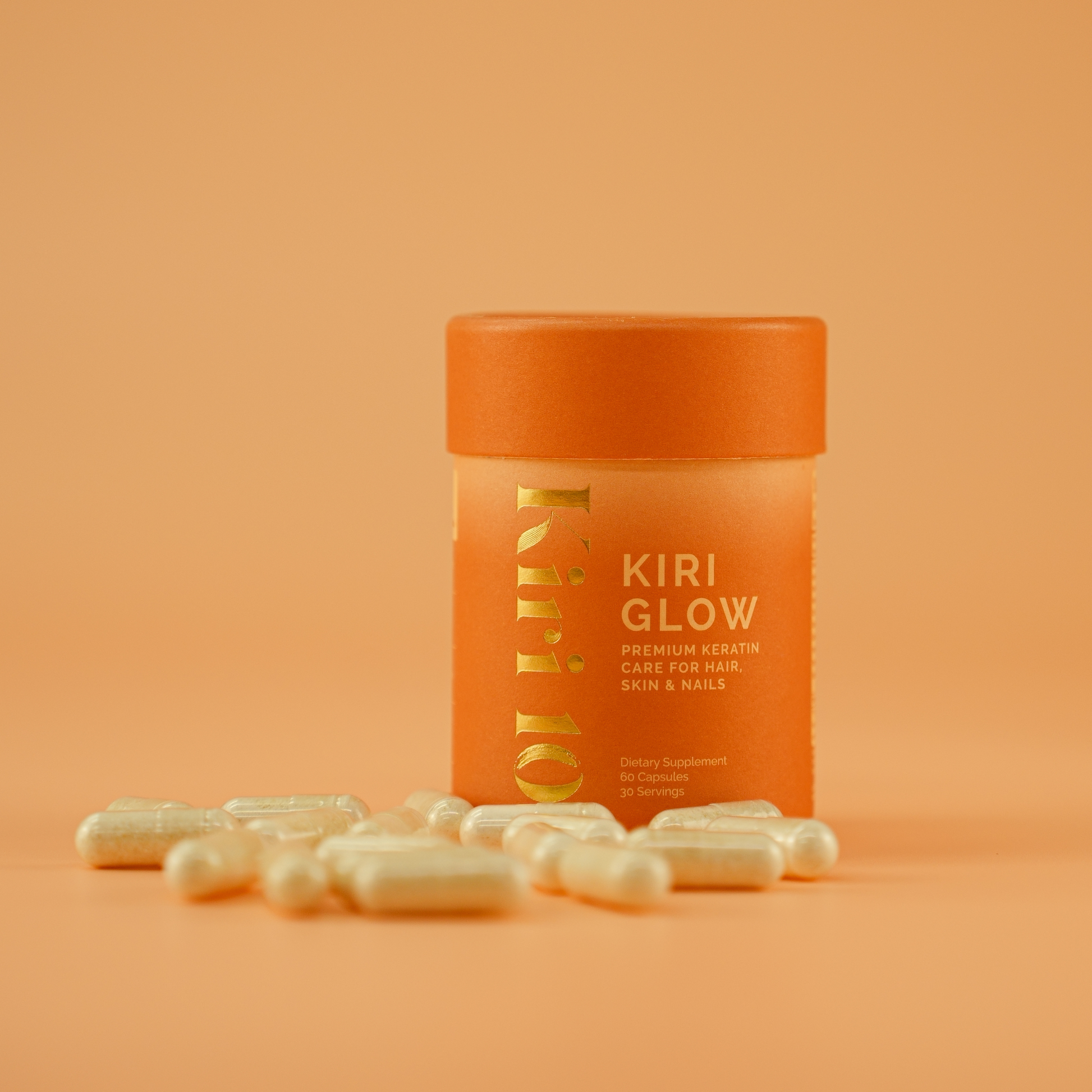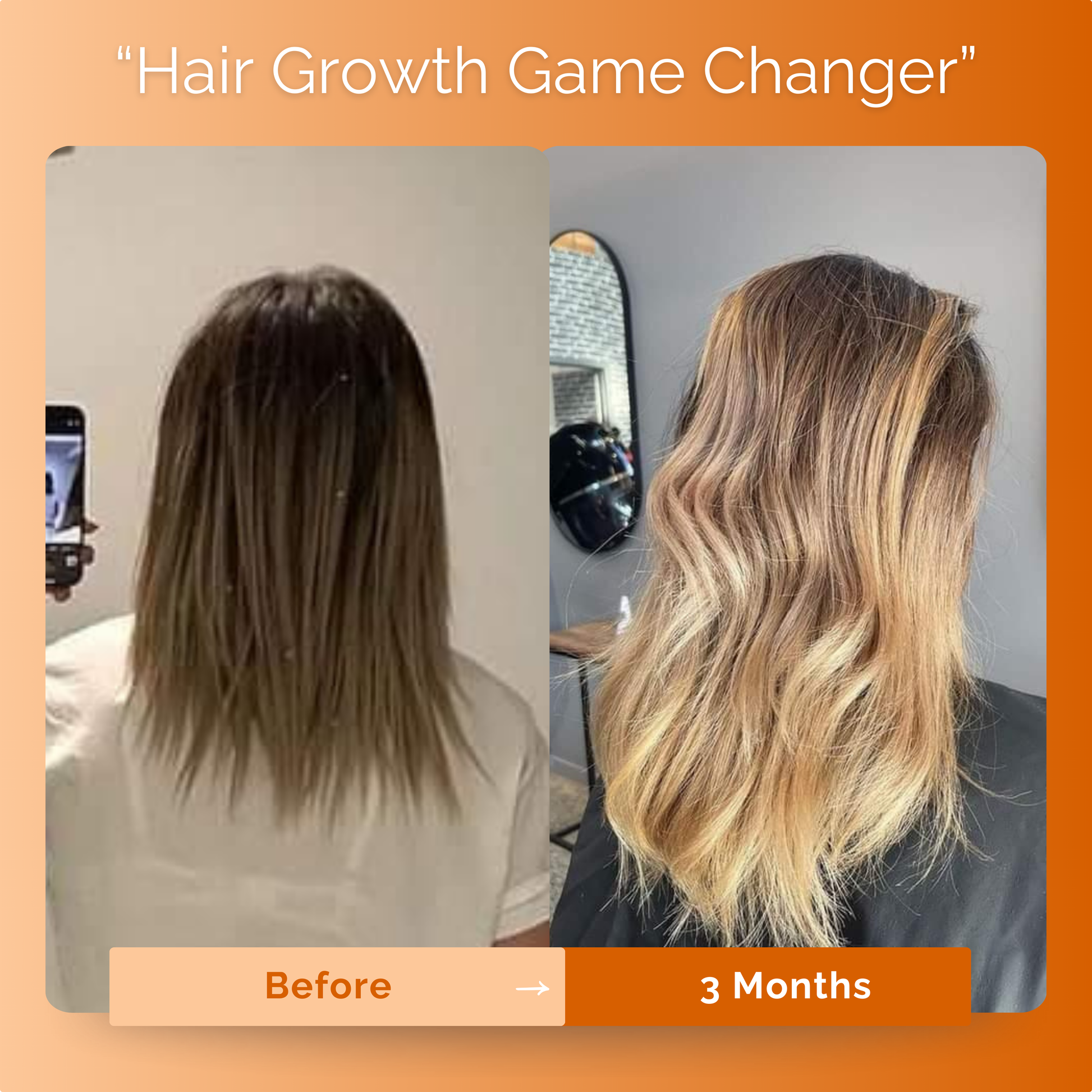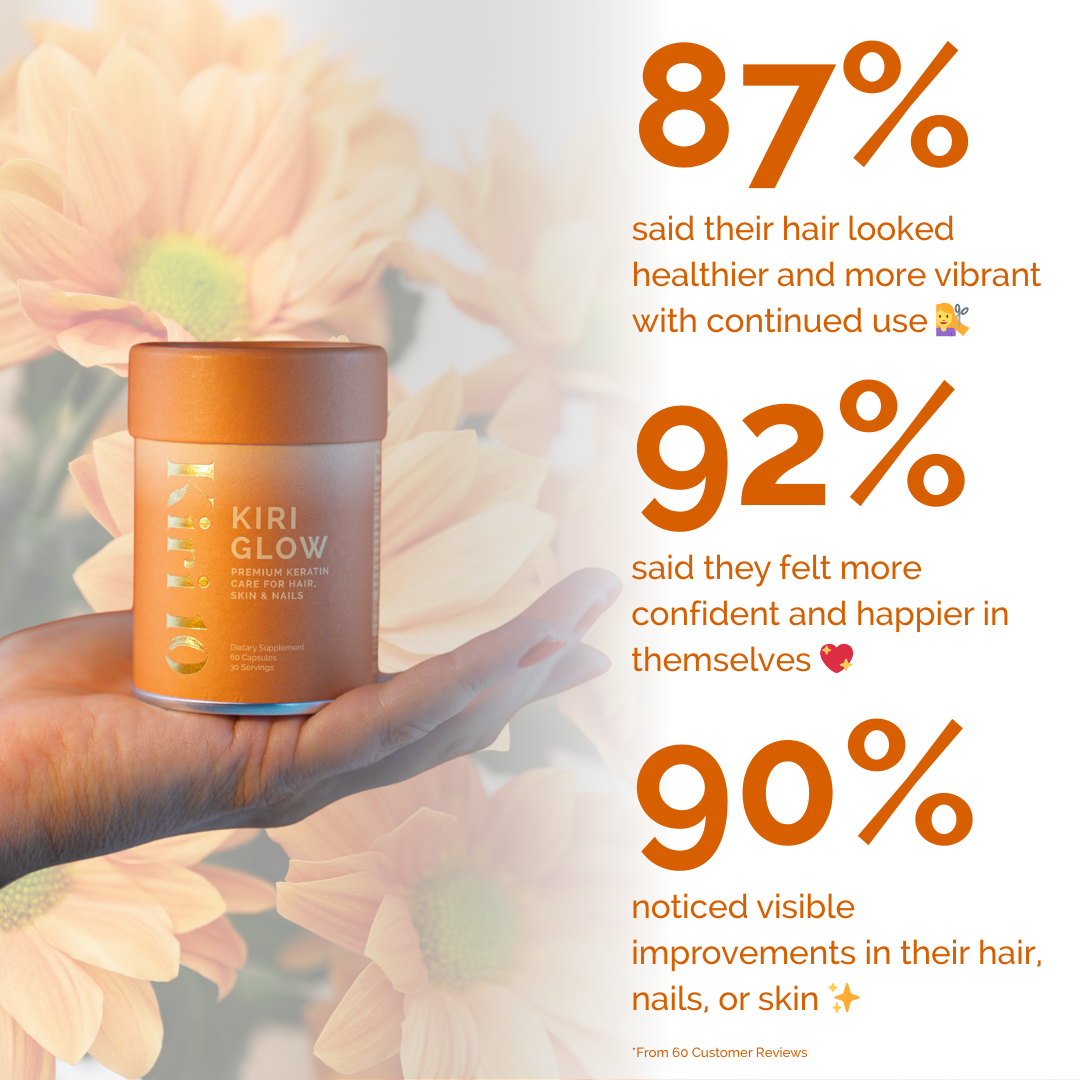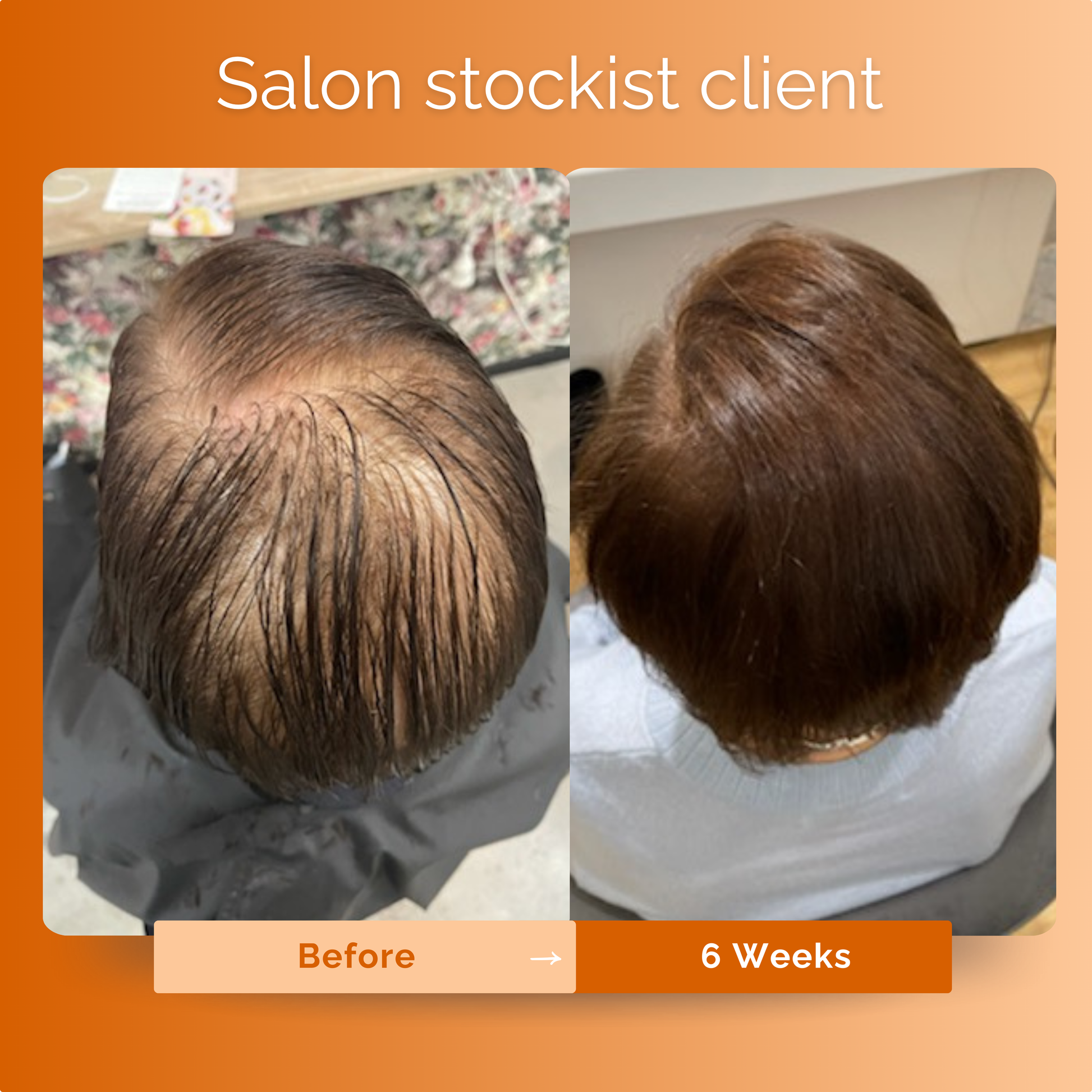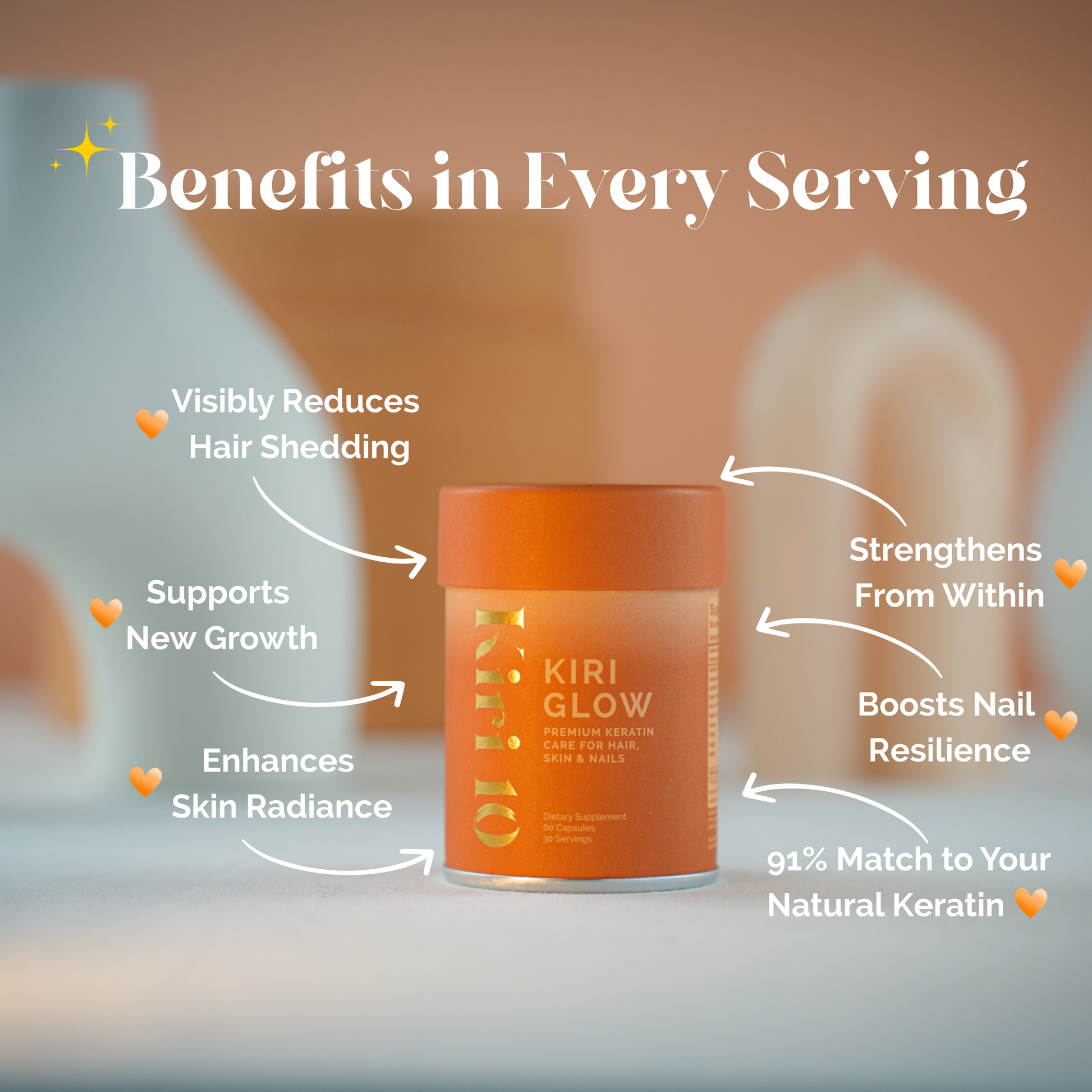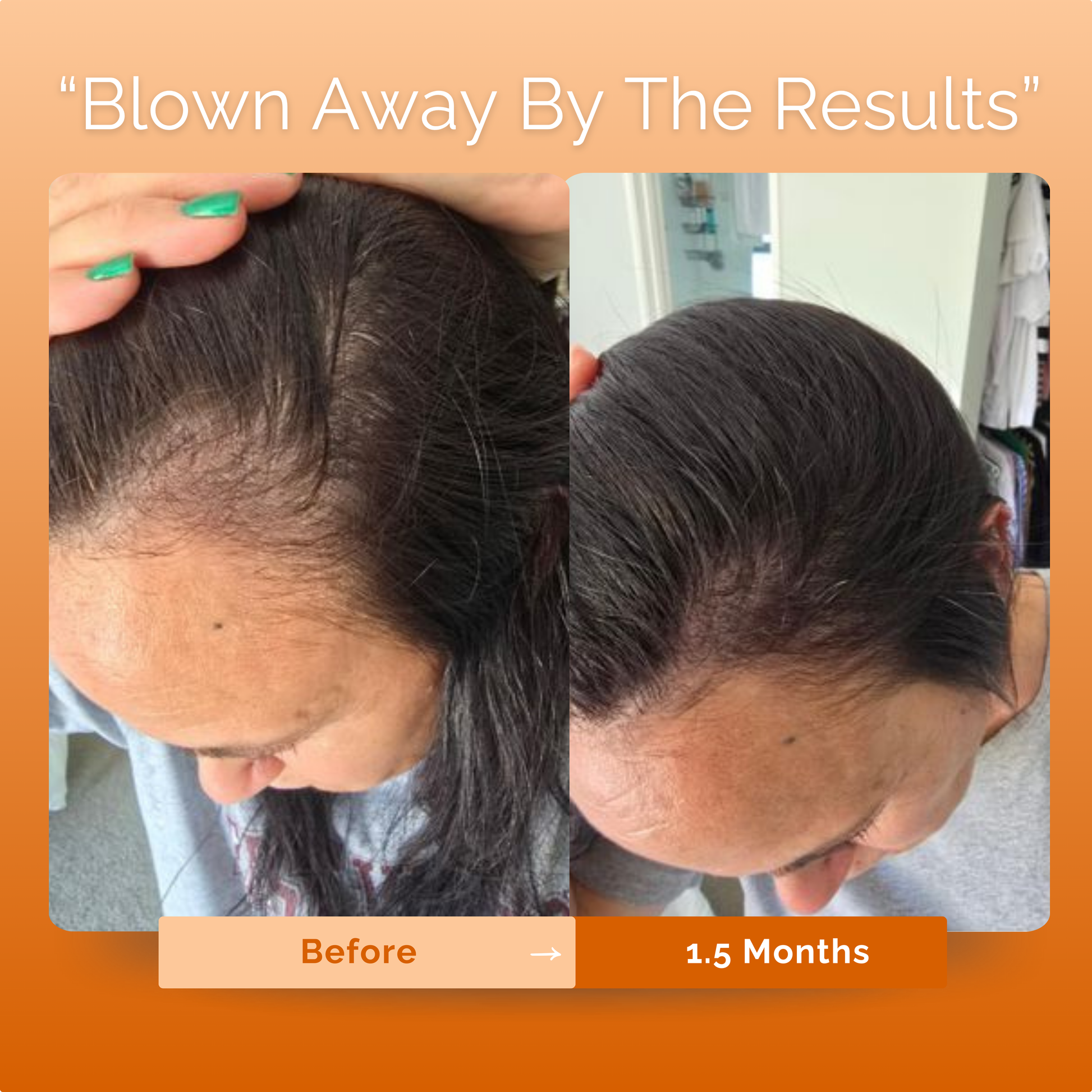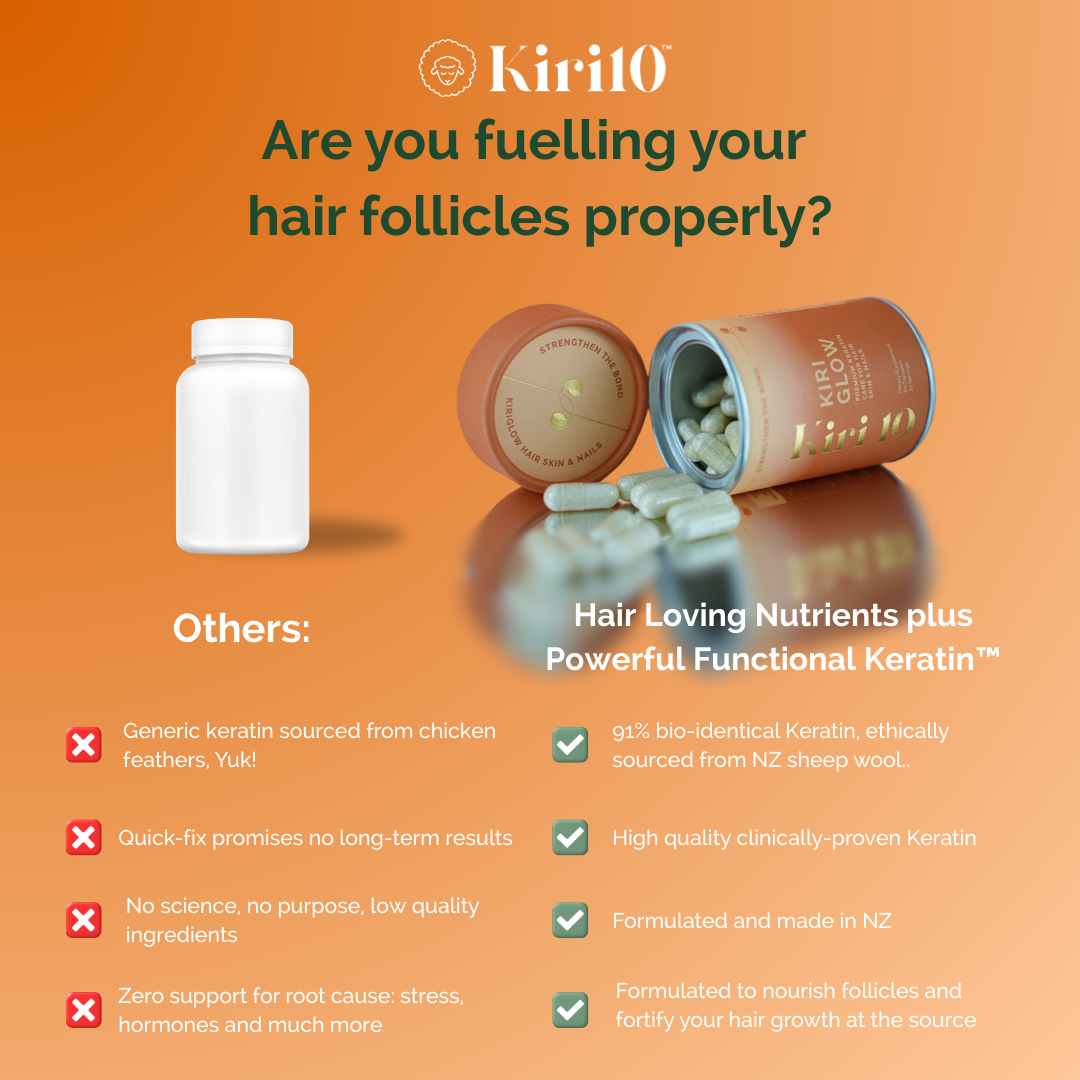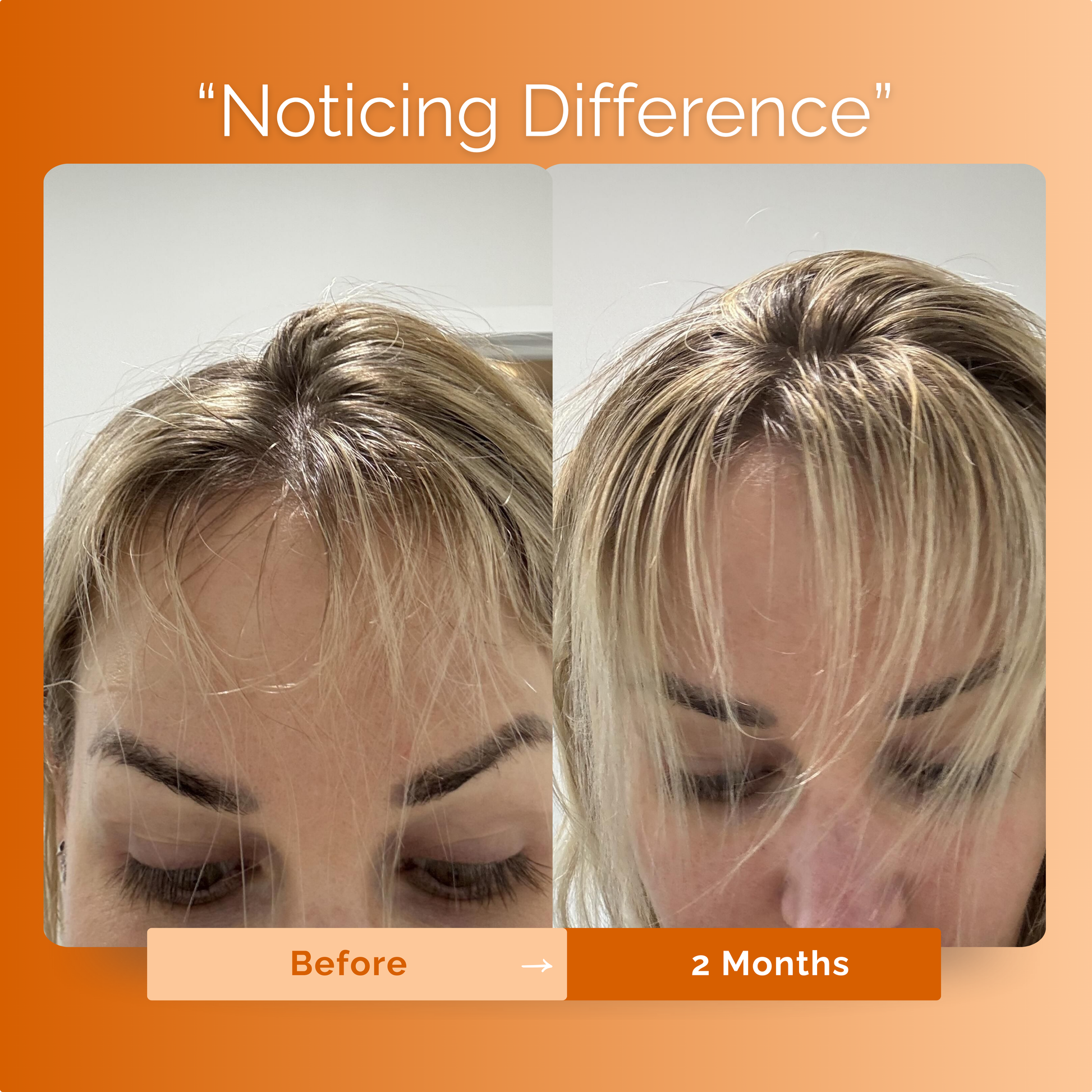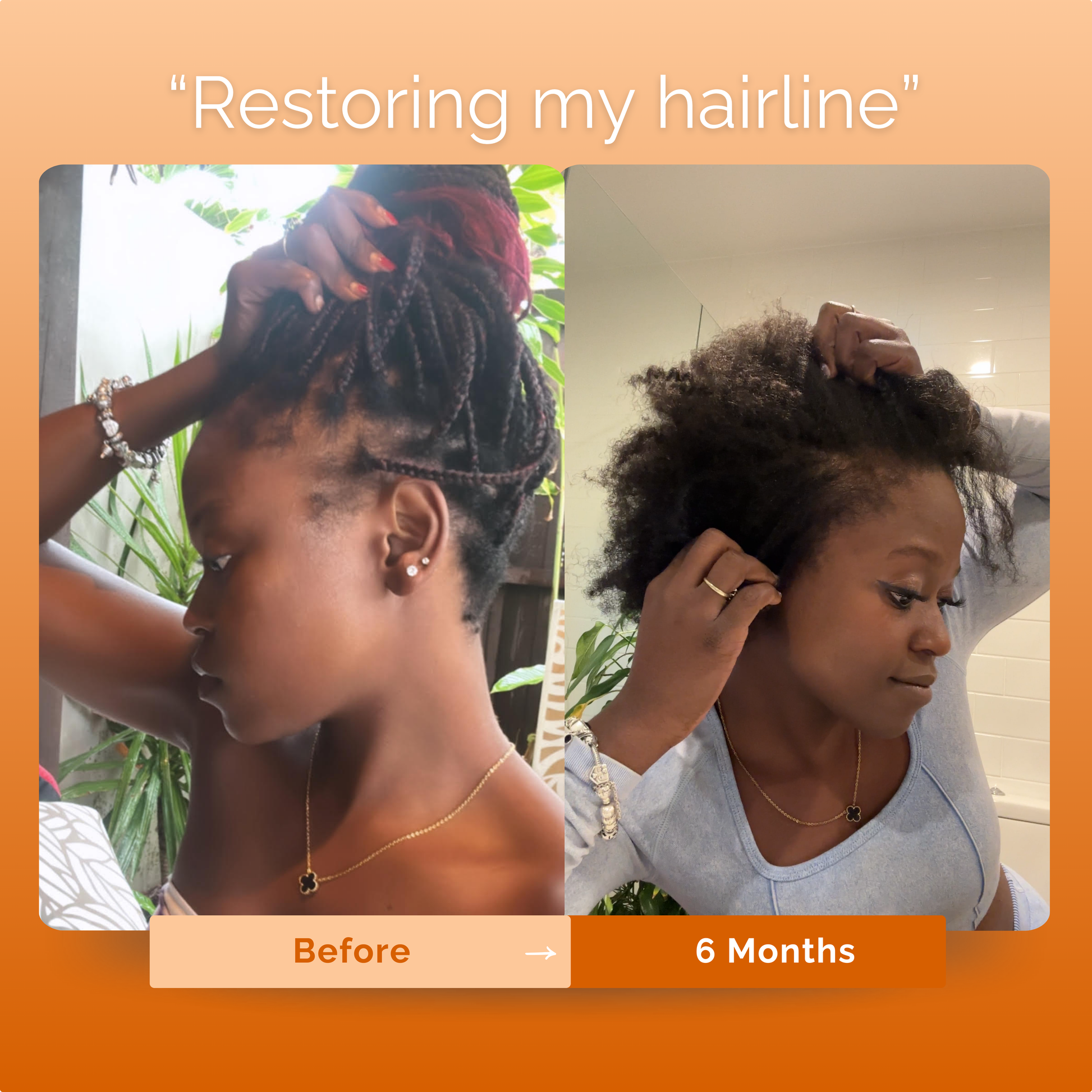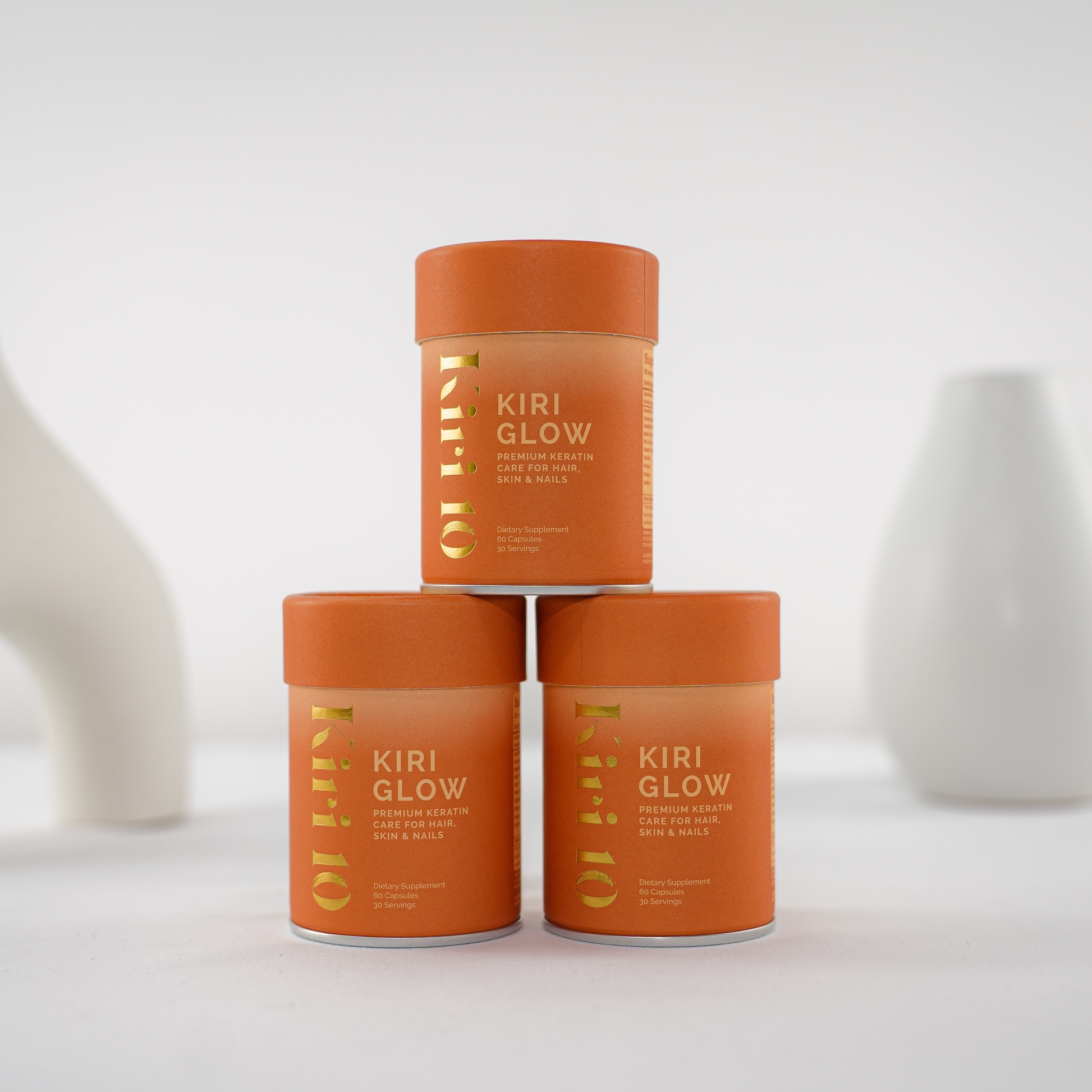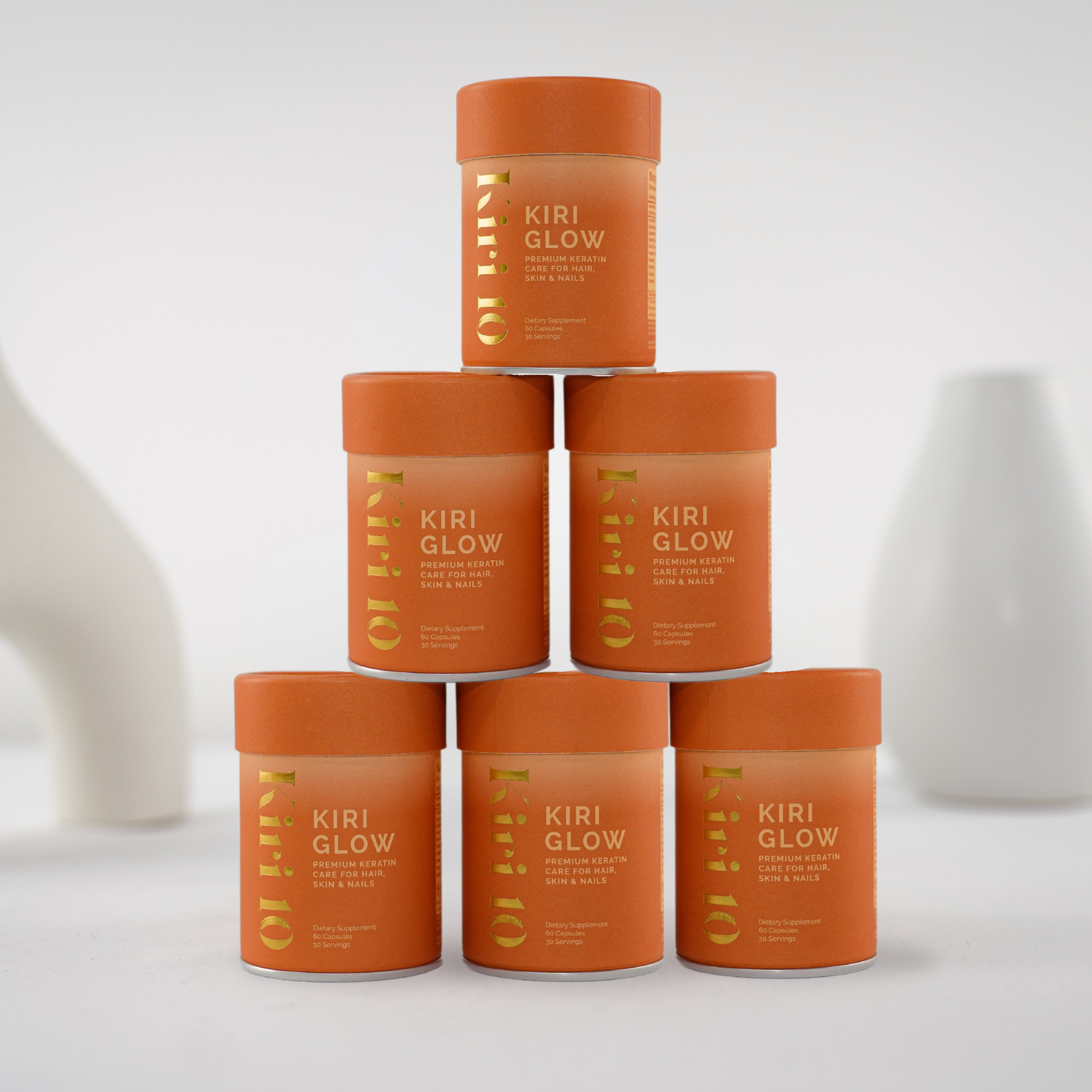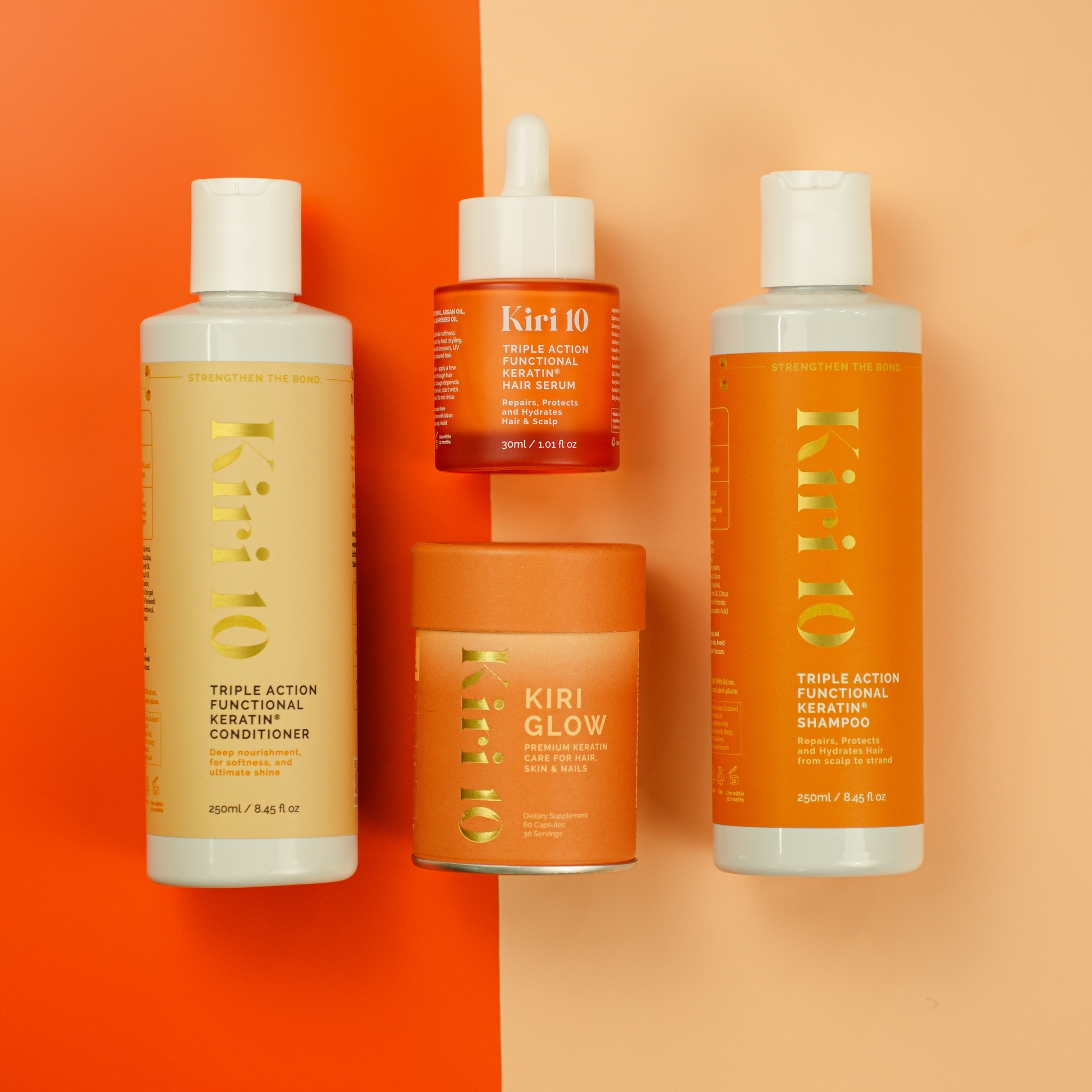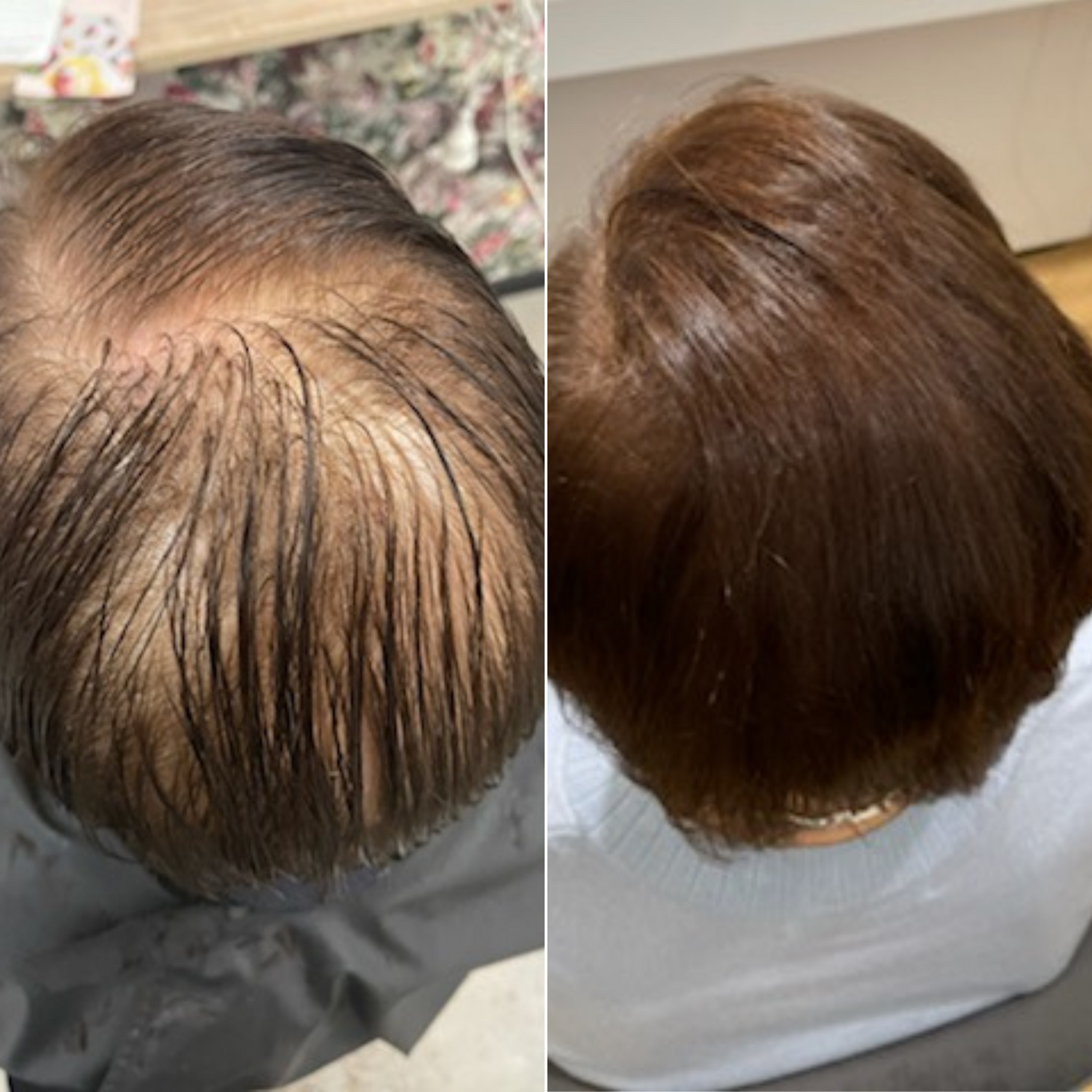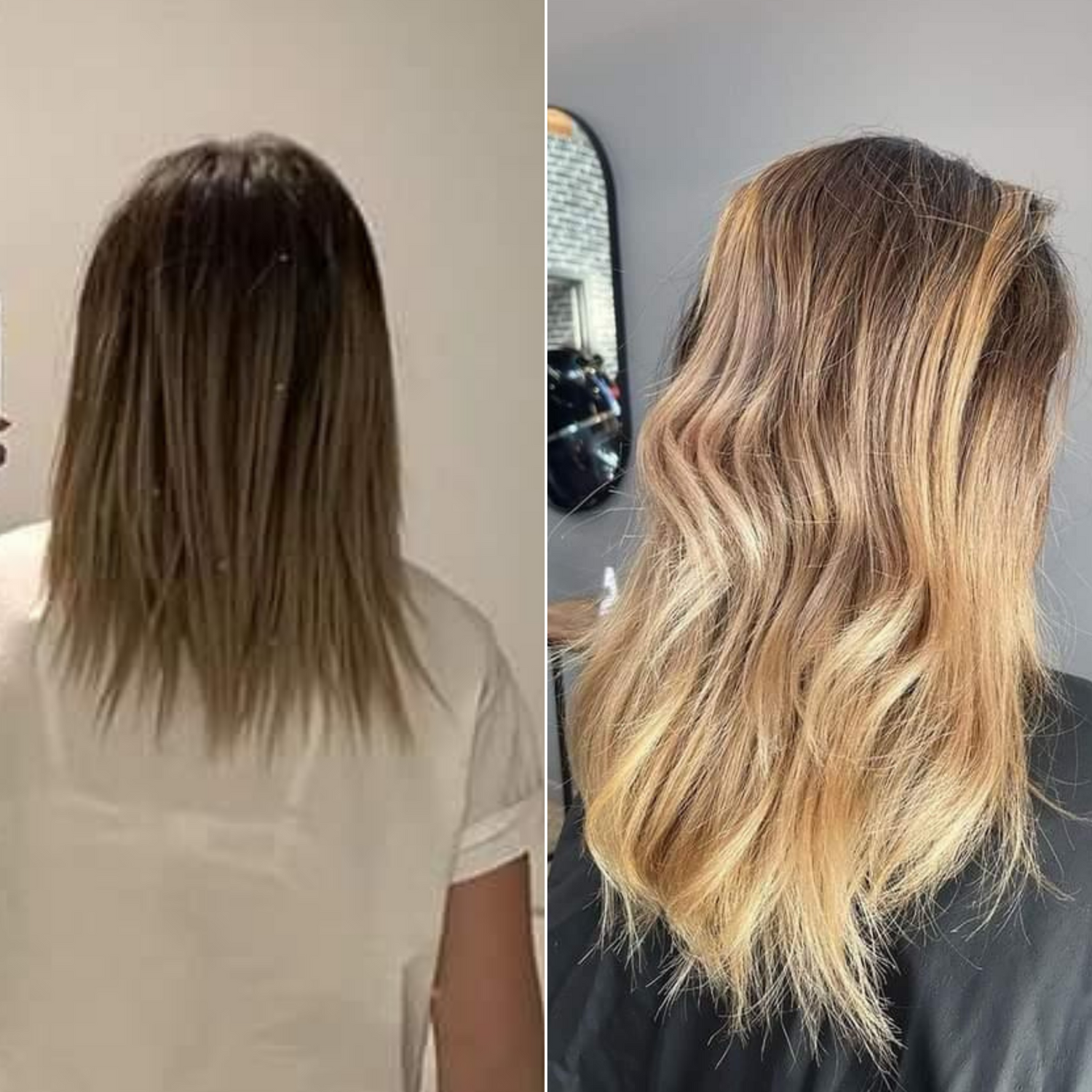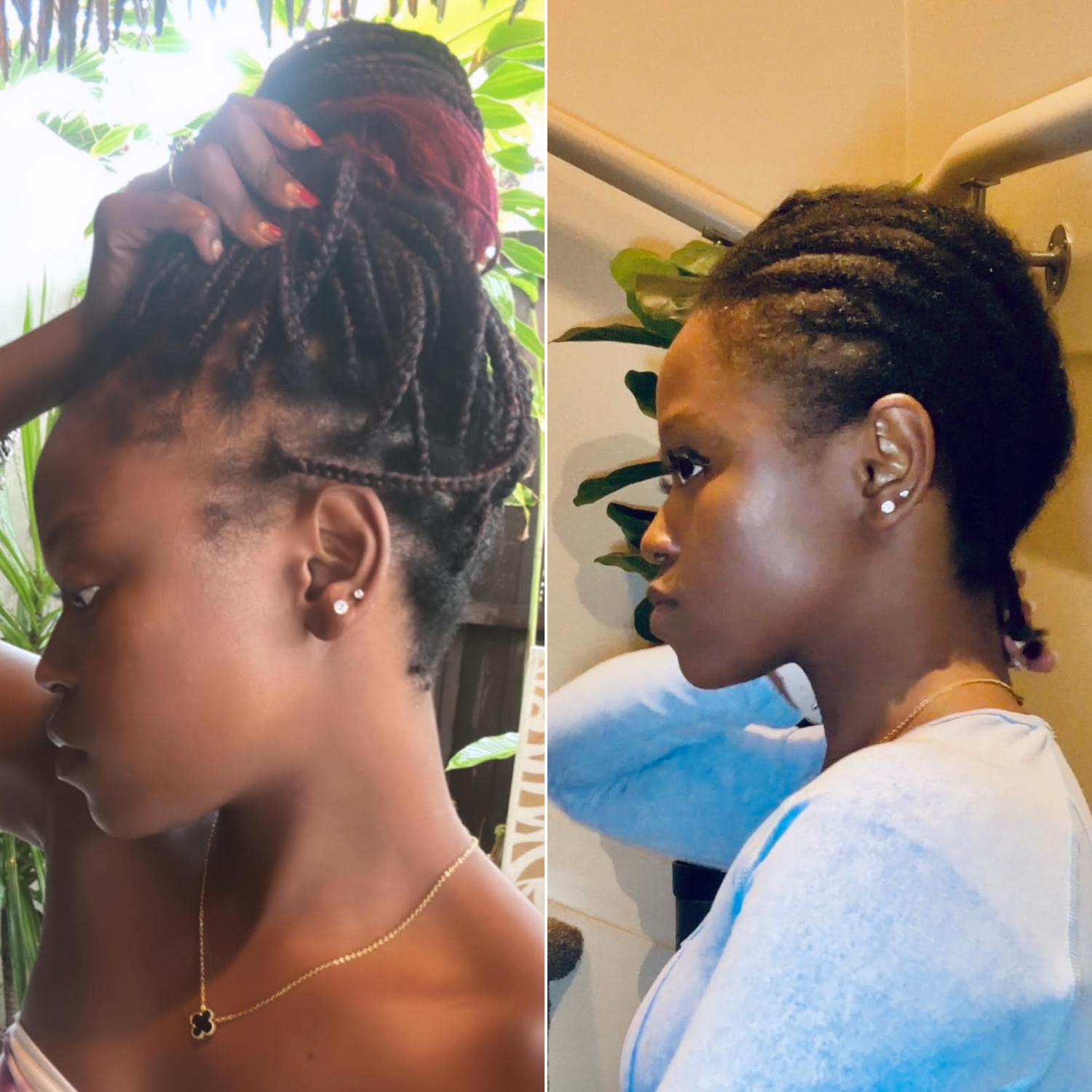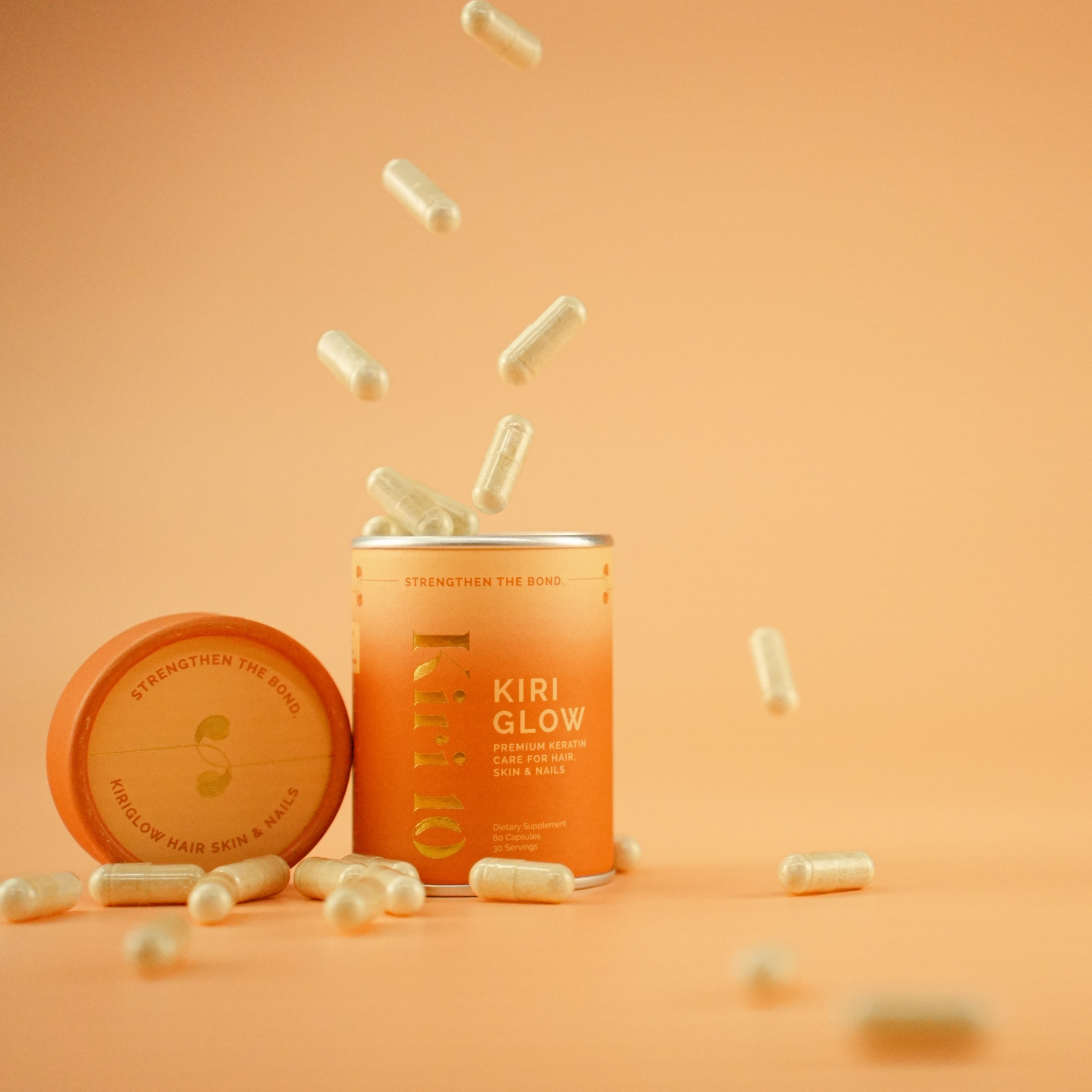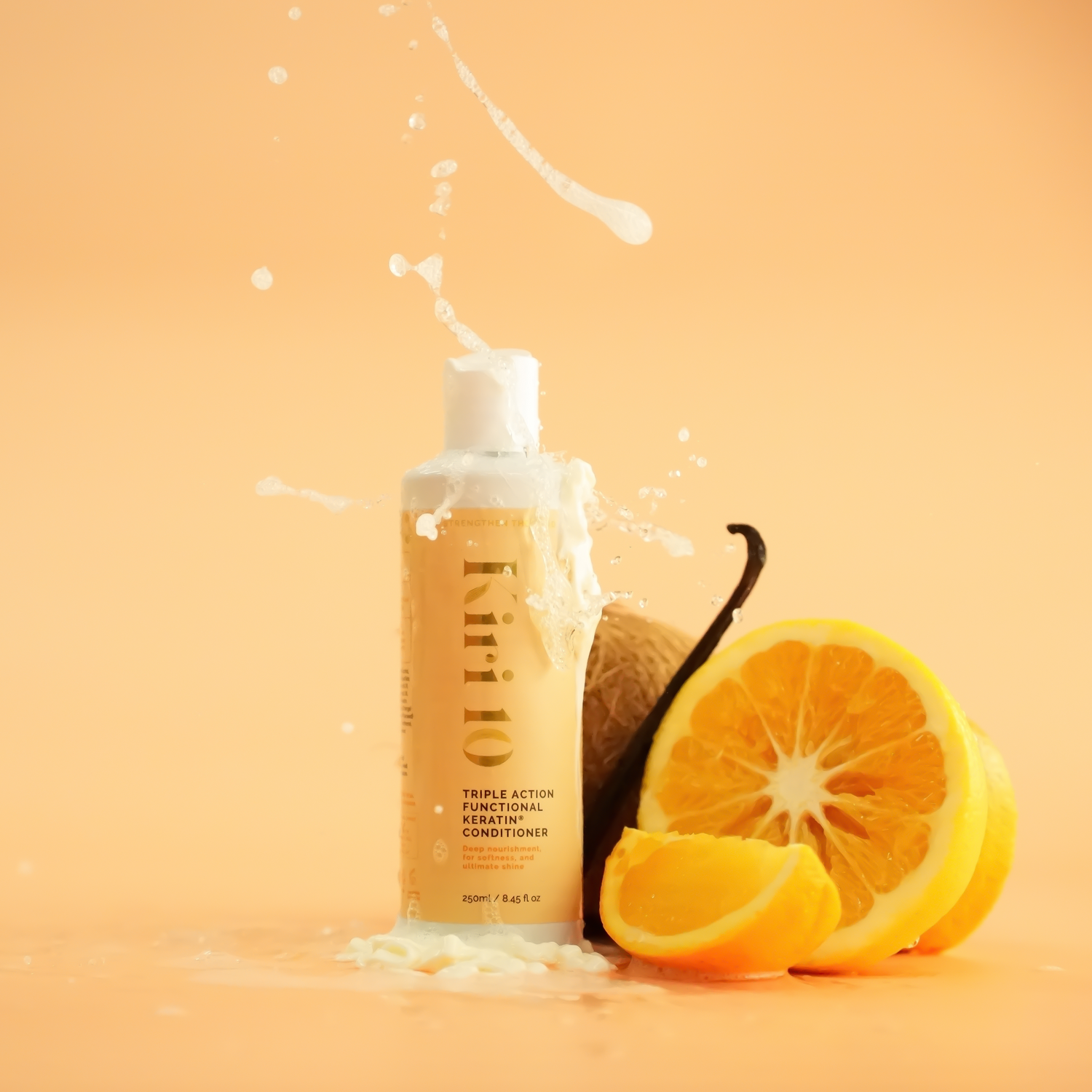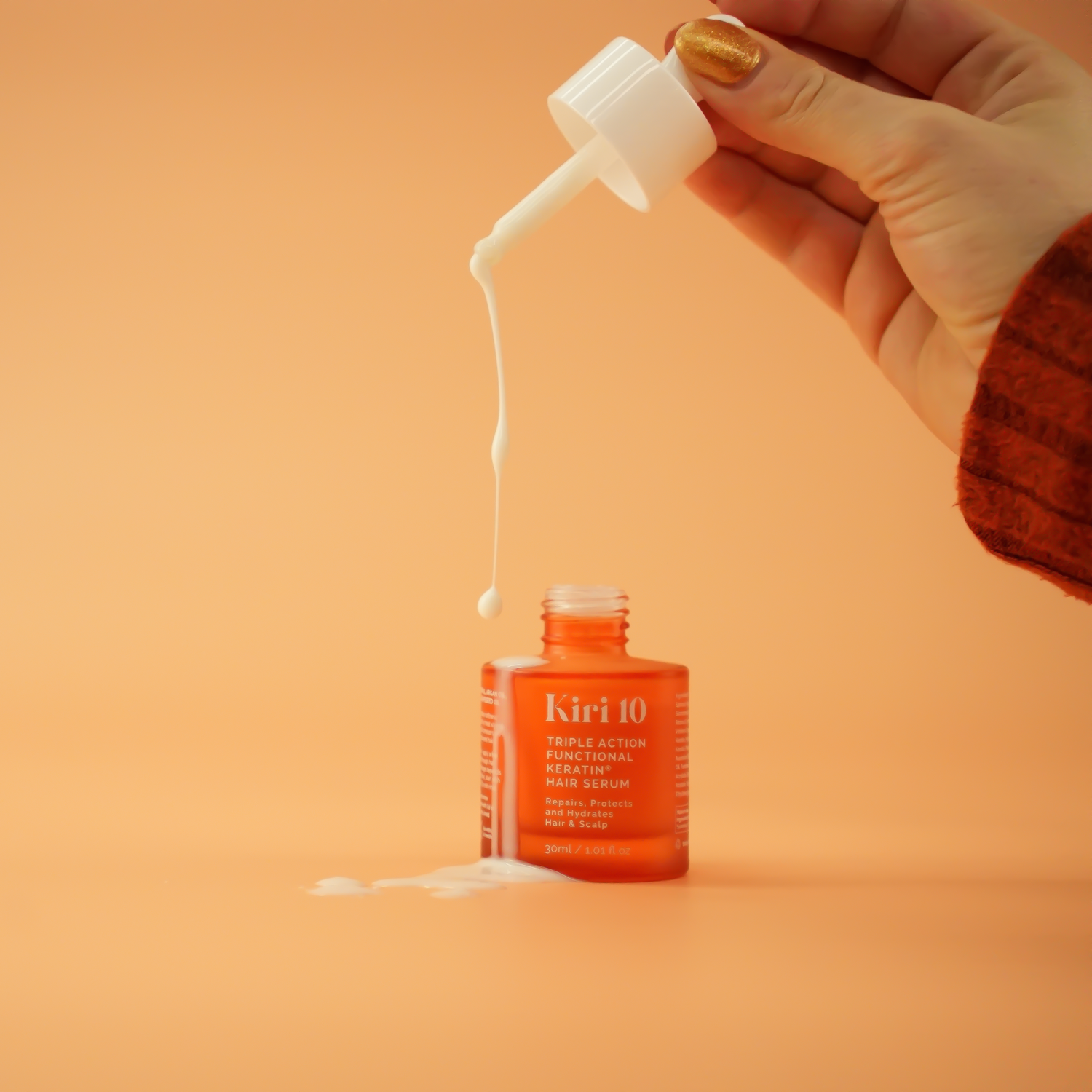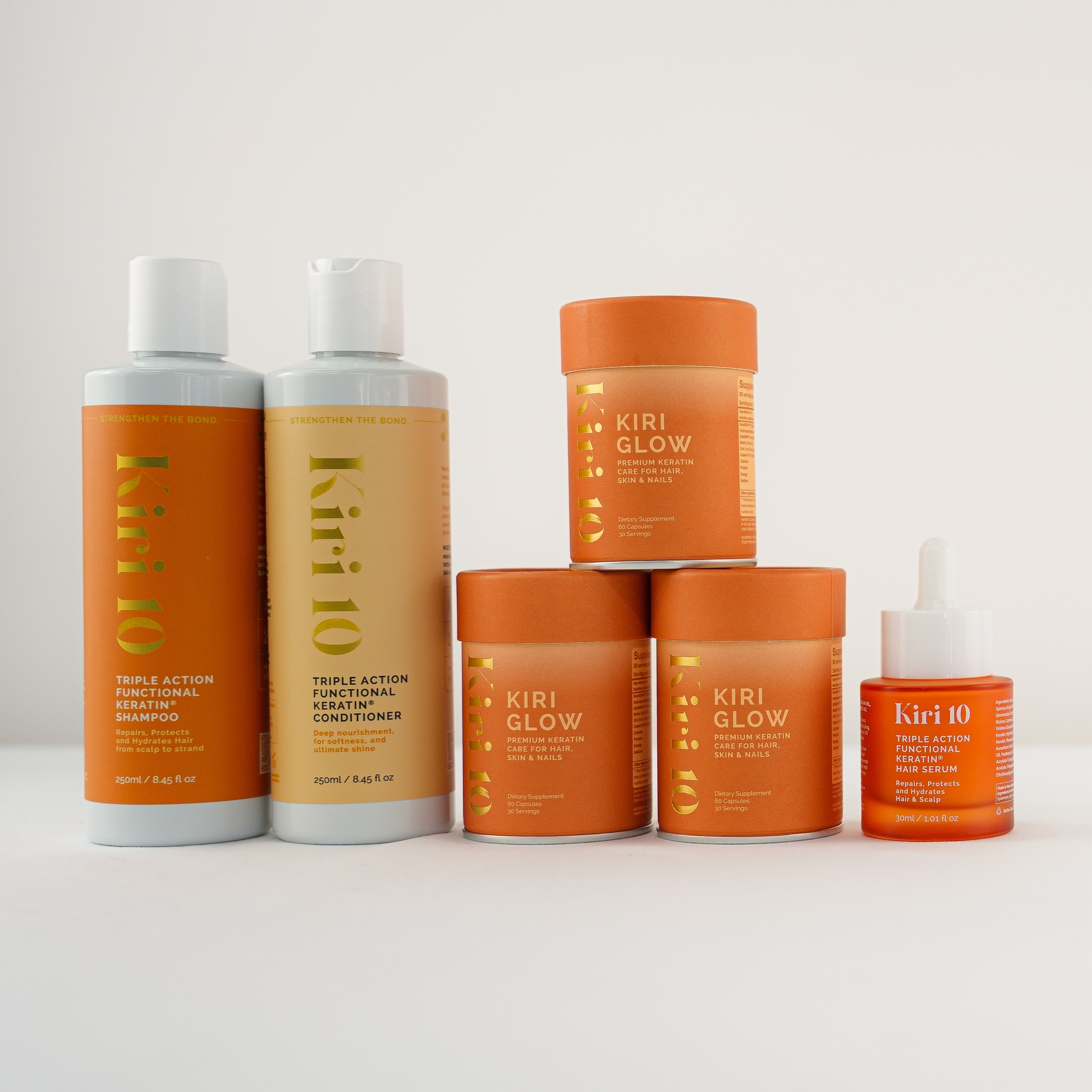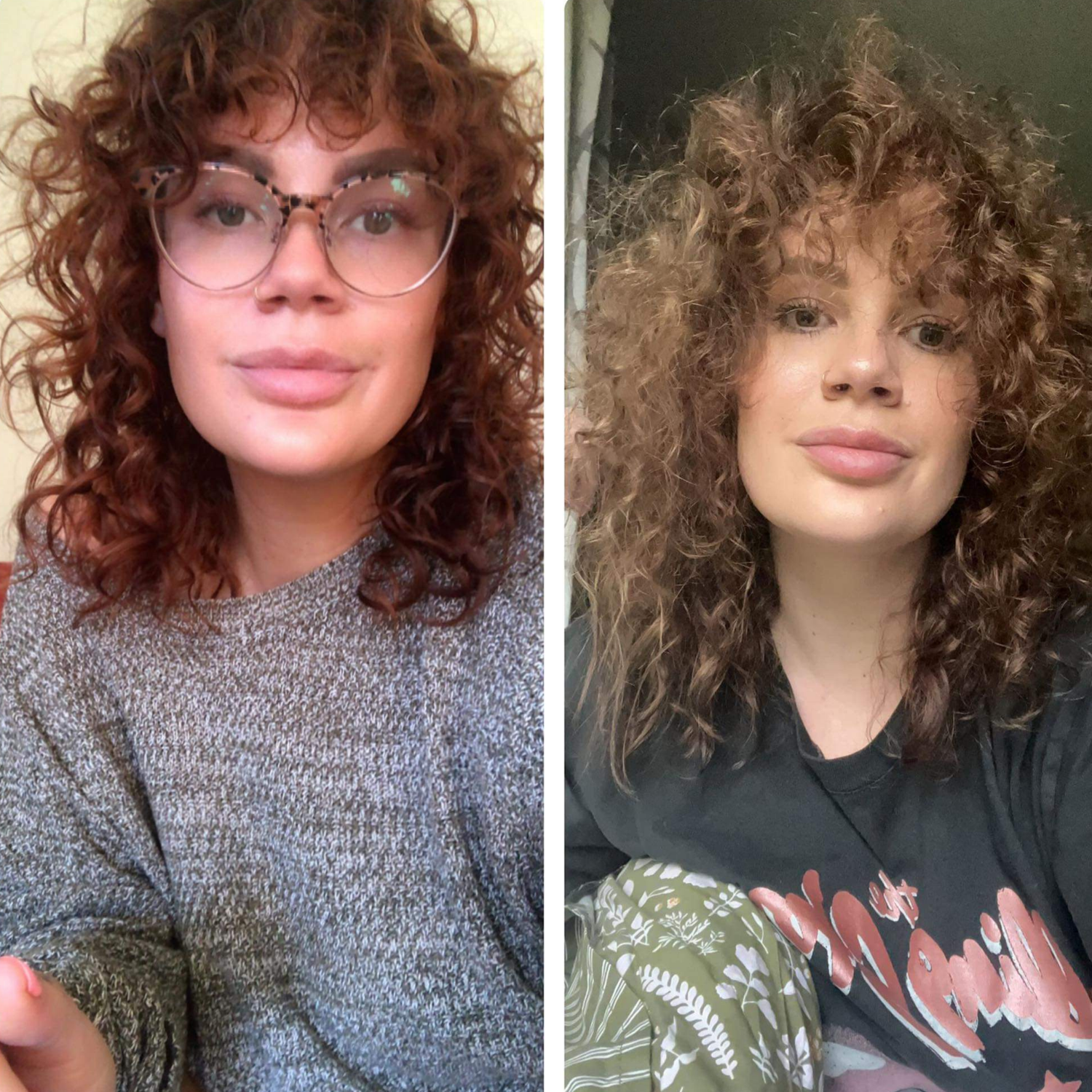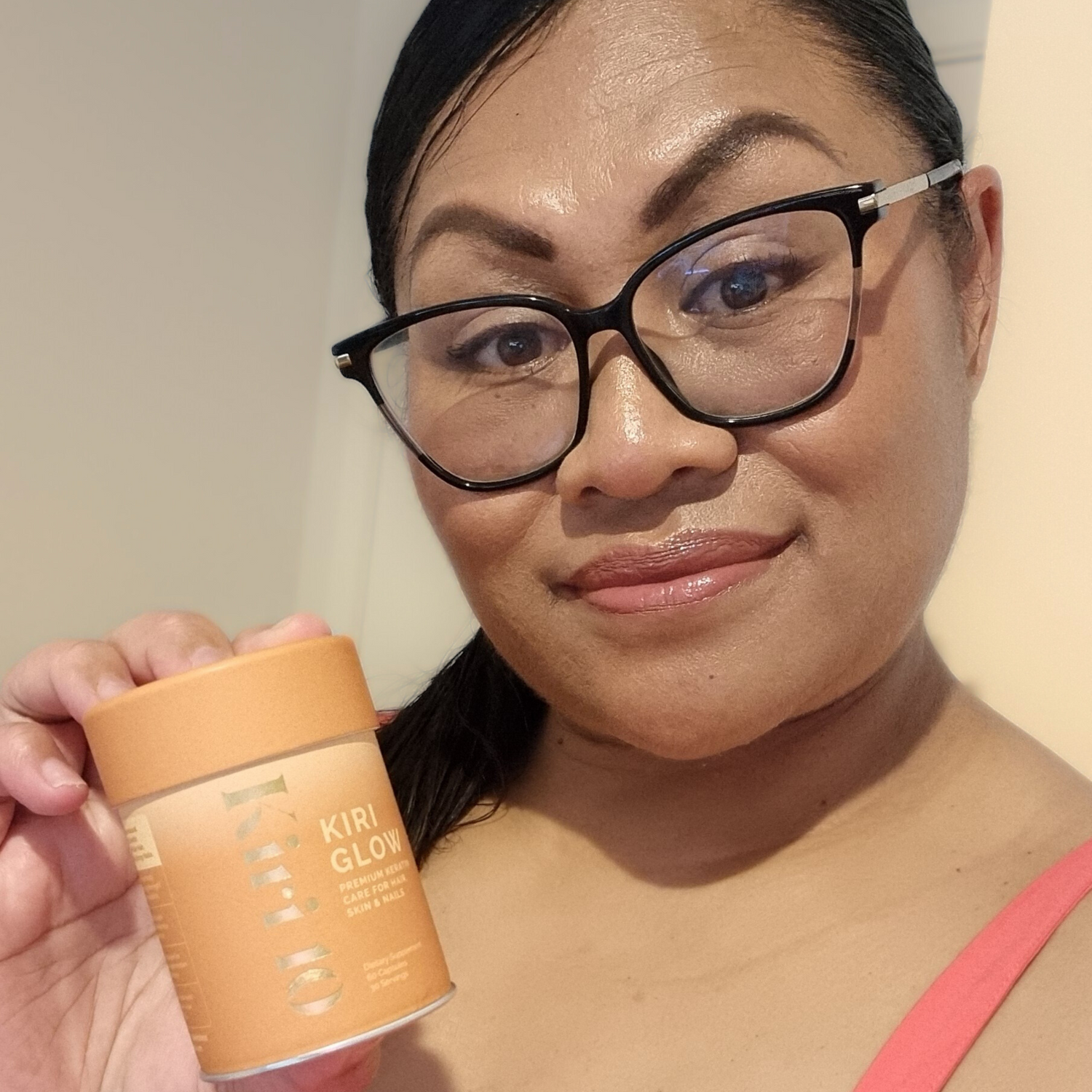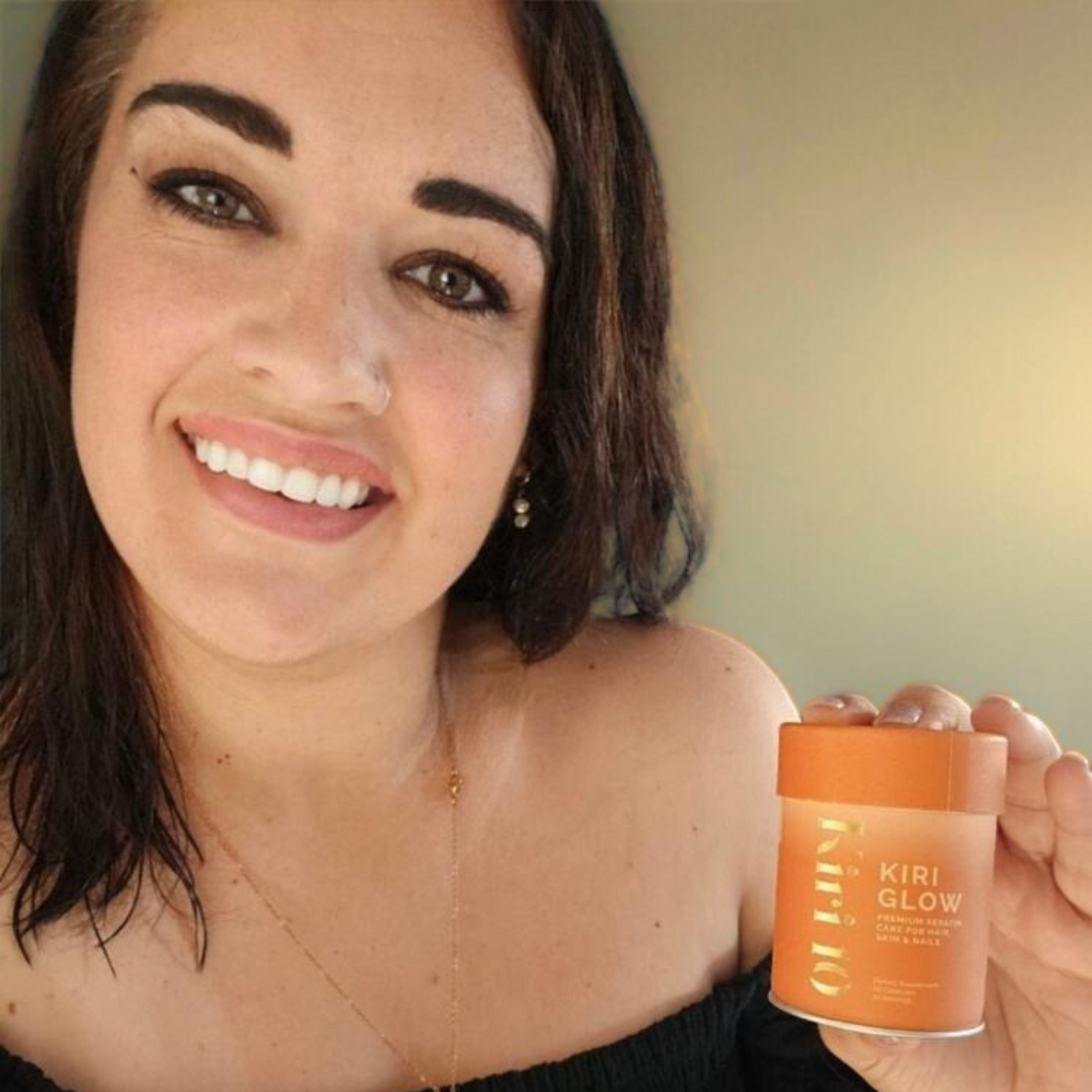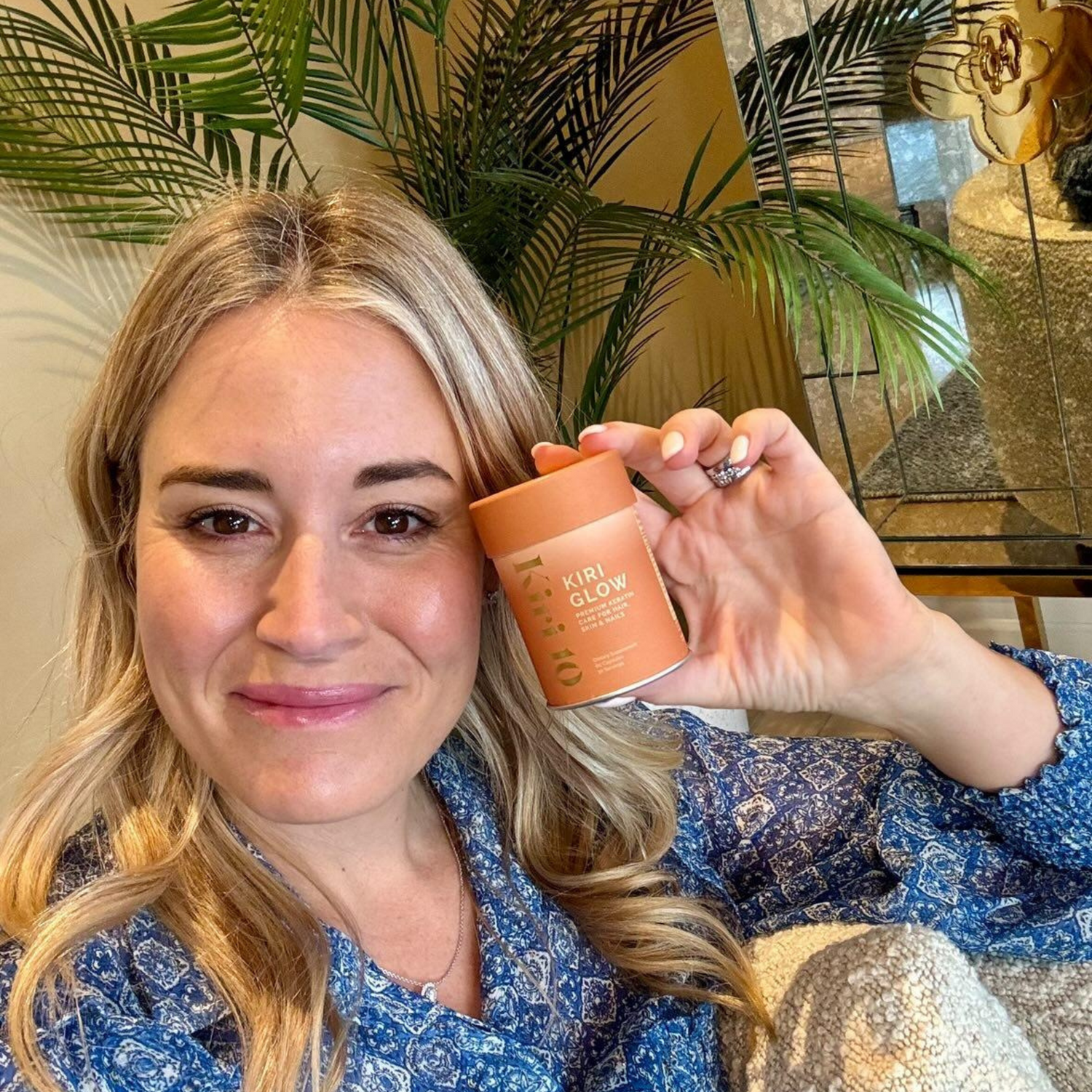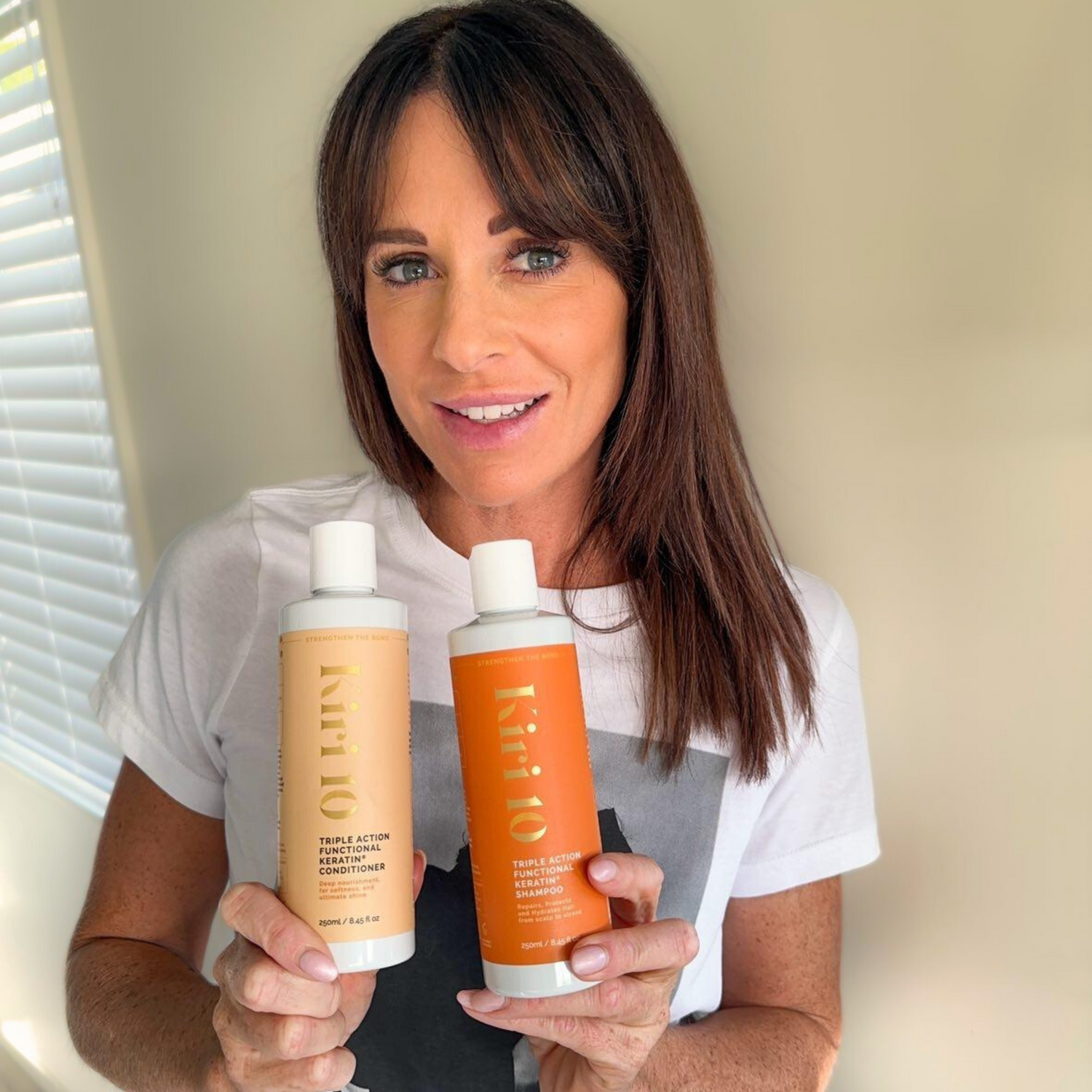Your compassionate, evidence-based guide to understanding and managing one of menopause's most challenging symptoms
If you've noticed your ponytail feeling thinner, your part getting wider, or more hair than usual collecting in your brush, know this: you're not imagining it, and you're definitely not alone. Hair changes during menopause are incredibly common, affecting more than half of all women going through this transition.
Let's talk honestly about what's happening to your hair, why it's happening, and most importantly, what you can actually do about it.
The Reality: You're in Good Company
Here's the truth that nobody talks about enough: over 52% of postmenopausal women experience noticeable hair loss or thinning. That's more than one in every two women. A comprehensive 2022 study published in the journal Menopause found that among 178 postmenopausal women aged 50 to 65, female pattern hair loss affected the majority of participants.
This isn't a minor issue affecting a small percentage of women. It's a widespread experience that deserves recognition, understanding, and real solutions. Your concerns about your changing hair are valid, and addressing them doesn't make you vain. It makes you human.
Understanding What's Happening: The Science Behind Menopausal Hair Loss
The Hormonal Shift
During menopause, your body goes through significant hormonal changes that directly impact your hair follicles. Here's what's actually happening:
Estrogen Decline: Estrogen is often called the "hair-friendly hormone" for good reason. It helps keep your hair in the active growing phase (anagen phase) for longer periods and protects your hair follicles. During menopause, estrogen levels can drop by as much as 60%, shortening the hair growth cycle and accelerating shedding.
Progesterone Reduction: Progesterone works alongside estrogen to support hair health. When progesterone declines, it affects how androgens (including testosterone) interact with your hair follicles.
Androgen Dominance: While your overall testosterone levels may not actually increase during menopause, the relative increase compared to estrogen creates what's called androgen dominance. This can trigger a process where testosterone converts to dihydrotestosterone (DHT), a hormone that causes hair follicles to shrink over time.
Think of it this way: estrogen was protecting your hair follicles from the effects of androgens. When estrogen drops, that protection disappears, and your follicles become more vulnerable.
The Pattern: How Menopausal Hair Loss Looks
Female pattern hair loss during menopause typically presents differently than male pattern baldness:
-
Widening part line along the top of your head
-
Thinning at the crown while your frontal hairline usually stays intact
-
Overall decreased volume rather than distinct bald patches
-
More scalp visibility when your hair is wet or under bright lighting
-
Slower hair growth and finer hair texture
This pattern is classified using the Ludwig Scale, which ranges from Type I (minimal thinning that can be camouflaged) to Type III (diffuse thinning with visible scalp).
Beyond Hormones: Other Contributing Factors
Menopause doesn't happen in isolation. Several other age-related changes compound hair loss:
Reduced Blood Flow: As you age, blood flow to your scalp can decrease, limiting the delivery of nutrients and oxygen to hair follicles.
Slower Cell Production: The rate at which your body produces new cells, including hair cells, naturally slows with age.
Nutritional Changes: Your body's ability to absorb certain nutrients may decrease, and dietary habits often shift during midlife.
Thyroid Changes: Thyroid function can change during menopause, and both hyperthyroidism and hypothyroidism can affect hair health.
Stress: The physical and emotional stress of navigating menopause, often combined with other midlife challenges (career pressures, aging parents, changing relationships), can trigger or worsen hair loss.
When Hair Loss Isn't Just About Menopause
While menopausal hormone changes are the most common cause of hair loss during this life stage, other conditions can contribute or coexist:
Iron Deficiency: Particularly common in women who experience heavy periods during perimenopause. Even if your iron levels are technically "normal," ferritin (stored iron) below 40 ng/mL can affect hair growth.
Thyroid Disorders: Both overactive and underactive thyroid can cause hair loss and often develop around menopause.
Autoimmune Conditions: Conditions like alopecia areata or lupus can cause patchy hair loss that looks different from typical menopausal thinning.
Medications: Some medications prescribed during menopause (blood pressure medications, antidepressants) can contribute to hair loss.
If you're experiencing sudden, dramatic hair loss, patchy bald spots, or hair loss accompanied by fatigue, unexplained weight changes, or other symptoms, consult your healthcare provider for proper evaluation.
7 Evidence-Based Ways to Fight Back
Now for the good news: you're not powerless. Here are seven proven strategies to support your hair health during menopause.
1. Consider Hormone Replacement Therapy (HRT)
What it does: HRT replaces the estrogen and sometimes progesterone your body is no longer producing, potentially slowing hair loss and reducing other menopause symptoms.
The evidence: While research specifically on HRT and hair loss is limited, one study found that women using HRT over six months experienced increased hair in the growth phase, reduced frontal hair thinning, and stronger hair overall. HRT addresses the root hormonal cause of menopausal hair loss.
Important note: HRT isn't right for everyone. Discuss the benefits and risks with your healthcare provider, considering your personal and family medical history.
Learn more: The North American Menopause Society provides comprehensive, evidence-based information about HRT options.
2. Try Topical Minoxidil (Rogaine)
What it does: Minoxidil is the only FDA-approved topical treatment for female pattern hair loss. It works by increasing blood flow to hair follicles and extending the growth phase.
The evidence: Multiple studies support minoxidil's effectiveness for female pattern hair loss, though results vary. About 40-60% of women see improvements with consistent use. The 5% foam formulation tends to be more effective than the 2% solution.
How to use it: Apply directly to your scalp twice daily when hair and scalp are dry. Results take 4 to 6 months of consistent use, and you must continue using it to maintain benefits.
Reality check: Minoxidil doesn't work for everyone, and initial shedding can occur as your hair cycle adjusts. It's also worth noting that some women see hair loss return with discontinued use. Patience and consistency are essential.
More information: American Academy of Dermatology offers detailed guidance on using minoxidil safely and effectively.
3. Support Your Hair with Targeted Nutrition
Your hair has significant nutritional requirements, and deficiencies can compound menopausal hair loss.
Protein: Hair is made of keratin, a protein. Aim for 0.8 to 1 gram of protein per kilogram of body weight daily. Quality sources include fish, lean meat, eggs, legumes, and Greek yogurt.
Iron: Essential for oxygen delivery to hair follicles. Include lean red meat, spinach, lentils, and pumpkin seeds. Pair plant-based iron with vitamin C for better absorption.
Biotin (Vitamin B7): Supports keratin production. Found in eggs, nuts, seeds, sweet potatoes, and avocados.
Vitamin D: Critical for hair follicle health. Get it from fatty fish, egg yolks, fortified foods, and safe sun exposure.
Omega-3 Fatty Acids: Support scalp health and reduce inflammation. Best sources are salmon, mackerel, walnuts, chia seeds, and flaxseeds.
Zinc: Essential for hair tissue repair. Found in oysters, beef, pumpkin seeds, and lentils.
Vitamin C: Supports collagen production and iron absorption. Include citrus fruits, berries, bell peppers, and leafy greens.
Consider supplements: If dietary intake is insufficient or you have diagnosed deficiencies, targeted supplementation like KiriGlow Keratin Capsules can help. Always consult your healthcare provider before starting new supplements.
Research reference: A comprehensive study published in PMC on nutrition during menopause details the specific nutrients that support hair health during this life stage.
4. Optimize Your Hair Care Routine
How you treat your hair externally matters, especially when it's already vulnerable.
Be gentle: Use a wide-tooth comb instead of brushes, and minimise brushing wet hair, avoid all together if possible. Pat and squeeze hair dry rather than rubbing vigorously.
Reduce heat styling: Minimise use of blow dryers, straighteners, and curling irons. When you do use heat, apply a protective serum first.
Avoid tight hairstyles: Ponytails, braids, and buns that pull on your hair can cause traction alopecia, worsening hair loss.
Choose gentle products: Avoid harsh sulfates like SLS and SLES, which can strip your scalp’s natural oils and aggravate dryness during menopause. Instead, opt for gentle, naturally derived cleansers like sodium coco-sulfate (from coconut oil). Unlike traditional harsh sulfates, sodium coco-sulfate effectively cleanses without irritation or over-drying, supporting scalp comfort and hair health. For best results, look for hair care that’s at least 95% naturally derived, as these formulations are designed to be kind to sensitive, changing hair and support your scalp’s natural balance.
Protect your scalp: Your scalp becomes more sensitive during menopause. Protect it from sun exposure and avoid products with irritating ingredients.
Stay hydrated externally: Use moisturising hair masks or treatments weekly to combat the increased dryness that comes with declining estrogen.
5. Manage Stress Effectively
Stress and hair loss create a vicious cycle: stress worsens hair loss, and hair loss creates more stress. Breaking this cycle is crucial.
Why it matters: Chronic stress elevates cortisol, which disrupts the hair growth cycle and can shift more follicles into the resting phase. Combined with menopausal hormonal changes, stress compounds hair loss significantly.
Proven stress reduction techniques:
-
Regular exercise: Aim for 30 minutes most days. Exercise reduces cortisol, improves circulation to your scalp, and supports hormonal balance.
-
Mindfulness practices: Meditation, deep breathing, or yoga can lower stress hormones and improve emotional wellbeing.
-
Adequate sleep: Prioritise 7 to 9 hours nightly. Hair grows during rest, and sleep deprivation increases stress hormones.
-
Social connection: Talk to friends, join support groups, or consider therapy. You don't have to navigate menopause alone.
-
Set boundaries: Protect your energy by saying no to non-essential commitments.
Additional resource: Harvard research on stress and hair loss explains the biological mechanisms connecting chronic stress to hair follicle dysfunction.
6. Supplement with Functional Keratin™
Since hair is primarily made of keratin, supplementing with Functional Keratin™ provides the specific building blocks your body needs to rebuild hair structure from within.
What makes it different: Functional Keratin™ is 91% bio-identical to the keratin found in your hair, skin, and nails. Unlike vitamins and minerals that support hair growth indirectly, Functional Keratin™ features a Triple-Keratin Complex, a patented blend of three complementary keratin types. Designed to work naturally with your body’s own cycle, it helps restore balance, repair follicles, and strengthen your strands for visibly healthier hair. Hydrolysed vs Functional Keratin™
The research: Clinical studies on Functional Keratin™ supplementation show it can reduce hair loss by up to 43 percent, while also improving strength, elasticity, thickness, and shine. These improvements are backed by peer-reviewed trials in women experiencing hair loss or thinning.
Why it works during menopause: As your body's natural keratin production slows with age and hormonal changes, supplementing with this bioavailable Triple-Keratin helps maintain hair structure and resilience.
At Kiri10, our supplements are formulated specifically with Functional Keratin™ to support women through all life stages, including the challenging menopause transition.
7. Consider Professional Treatments
If lifestyle changes and over-the-counter treatments aren't providing sufficient results, several professional options exist in New Zealand:
Oral Medications:
-
Spironolactone: An anti-androgen medication that can reduce hair loss and improve hair density by blocking DHT (available on prescription in NZ).
-
Finasteride: Sometimes prescribed off-label for postmenopausal hair loss; discuss with your GP or dermatologist as it's primarily for male hair loss and not universally approved for women.
In-office procedures:
-
Platelet-Rich Plasma (PRP): Uses your own blood plasma to stimulate hair follicles, available at some NZ dermatology clinics, results are promising, but can vary.
-
Low-Level Laser Therapy (LLLT): Laser devices registered for use in NZ may stimulate follicles and improve hair density; discuss safety and suitability with a hair specialist.
Important: Always seek advice from a qualified New Zealand dermatologist or trichologist who specialises in hair loss to find the right approach for your situation. For more NZ-specific support, refer to DermNet NZ or ask your GP for a referral to a local hair loss clinic.
Creating Your Personal Hair Health Action Plan
Fighting menopausal hair loss isn't about finding one magic solution. It's about creating a comprehensive approach that addresses multiple factors:
Immediate steps (this week):
-
Schedule bloodwork to check iron, ferritin, thyroid, and vitamin D levels
-
Start taking progress photos in consistent lighting
-
Audit your hair care products and replace harsh formulas with gentle alternatives
-
Begin a daily stress-reduction practice (even 5 minutes helps)
Short-term strategies (next 1 to 3 months):
-
Address any diagnosed nutritional deficiencies
-
Start minoxidil if appropriate (after discussing with your GP)
-
Begin Functional Keratin™ supplementation (after discussing with your GP)
-
Implement protective hair care practices
-
Establish consistent exercise and sleep routines
Long-term maintenance (3+ months):
-
Reassess progress with photos and tracking
-
Continue treatments that show results
-
Maintain nutritional support and stress management
-
Consider HRT or professional treatments if needed
-
Stay patient (hair grows slowly, typically about half an inch per month)
The Bigger Picture: You're More Than Your Hair
Hair loss during menopause can feel devastating. It's often the first visible sign of aging that you can't hide, and it can shake your confidence and sense of identity. Those feelings are completely valid.
But here's what's also true: you're navigating a major life transition with grace, strength, and resilience. Your worth isn't measured by your hair thickness. The wisdom you've gained, the relationships you've built, and the woman you've become matter infinitely more than your follicle count.
That said, wanting to address hair loss doesn't make you vain. Taking action to support your hair health is an act of self-care, and you deserve to feel confident and comfortable in your own skin at every age and stage.
Moving Forward with Hope
Menopausal hair loss is common, but it's not inevitable that you'll experience significant or permanent loss. With the right combination of treatments tailored to your specific situation, many women see meaningful improvements.
The most important thing? Take action sooner rather than later. Hair loss is easier to prevent than reverse, so addressing it early in the menopause transition gives you the best chance of maintaining your hair's health and density.
You deserve to feel beautiful, confident, and empowered during menopause and beyond. Your hair journey is just one part of your larger story, and with the right support, knowledge, and tools, you can write the next chapter with confidence.
If you're ready to support your hair health with evidence-based solutions, we're here to help. Kiri10 was created specifically for women like you, navigating the challenges of hair loss with science-backed ingredients and an empathetic, compassionate approach.
Here's to healthier hair and the incredible woman growing it.
References and Further Reading:
-
The Menopausal Transition and Hair Follicle Changes - Comprehensive research on hormonal impacts on hair during menopause
-
Prevalence of Female Pattern Hair Loss in Postmenopausal Women - 2022 study showing 52% prevalence
-
Treating Female Pattern Hair Loss - Harvard Health - Evidence-based treatment overview
-
American Academy of Dermatology: Hair Loss in Women - Professional guidance and resources
-
Nutrition for Hair Loss During Menopause - Research on dietary support for hair health
-
Healthline: Menopause and Hair Loss Prevention - Practical strategies for managing hair loss

